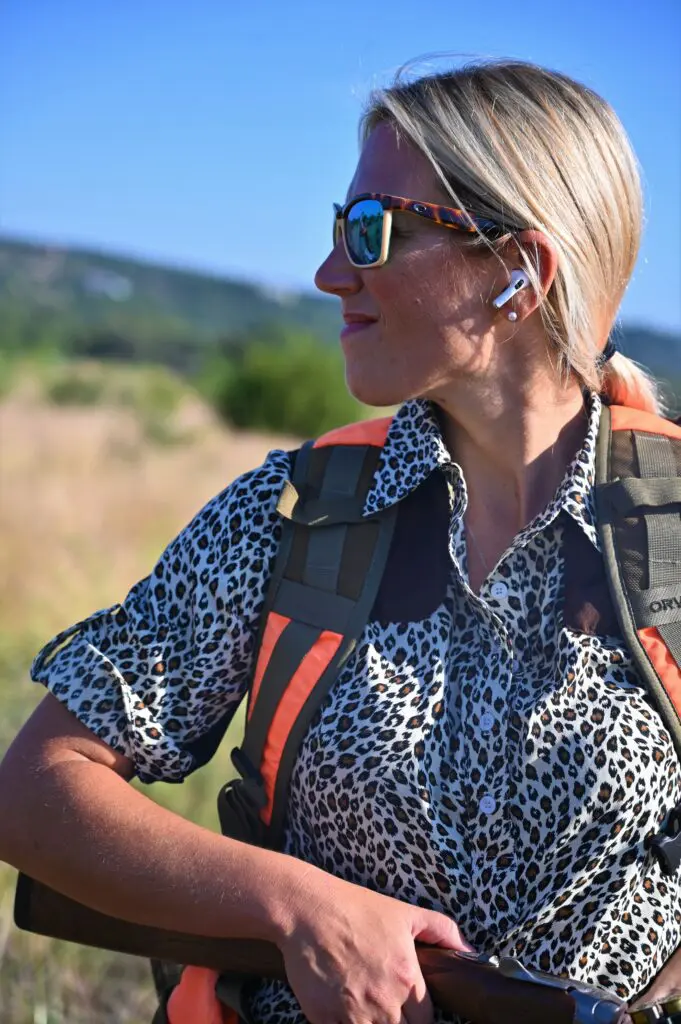Story by Lili Keys, Lone Star Outdoor News. Photo by Kristin Parma.
At a fall dove hunt, several younger hunters looked like they might be listening to music. It turned out, they were wearing the Apple AirPods, utilizing the buds’ noise cancellation features.
Maybe it’s convenience. You forget your hearing protection at home but have AirPods in the truck. Then you remember they have noise canceling features. You pop them in your ears and head out into the field.
The whole point of sticking something in your ears before hunting or shooting is protection. So, do the AirPods actually protect your ears?
“No, they aren’t helping their hearing,” Jack Homa, owner of Electronic Shooting Protection (ESP) said.
AirPods or similar earbuds are as Homa likes to say, “one-size-fits-all-fits- nobody.”

“They are a fixed shape and don’t have a good enough acoustic seal to the ear ca- nal, which (the seal) is what makes hear- ing protection actually work since it helps filter the sound of a gunshot,” he said.
Audiologist Dr. Grace Sturdivant, of Ottopro, sees people wearing AirPods as hear- ing protection all the time. Not only with bird shooters, but there are a number of people in the competitive sporting clays world.
“As a doctor of audiology, I just cringe,” she said.
But they are noise-canceling headphones. Wouldn’t that work?
“One thing I love about AirPods is their active noise cancellation, which works very well,” Sturdivant said. “But only for what it’s intended to target, which is low to moderate level steady state background noise such as road noise in the car and the rumble on a plane.”
Gun shots are short, abrupt and high intensity. It’s so abrupt in fact, that it’s too fast for the noise canceling to make that much of a difference. Sturdivant noted that people’s perception of loudness or muffled sound might cause them to believe the AirPods are blocking the sound of gunshots.
“People might perceive that it (the gun shot) was more muffled with an AirPod in, but that’s because of the rest of the noise that the AirPod is canceling out around them,” she said. “You can’t rely on your subjective perception of how loud something is to judge it’s true sound pressure level. Sound pressure level is how we objectively measure the loudness of something. Just because it sounds like you are getting some protection from it doesn’t mean you truly are.”
The most important factor when it comes to hearing protection is the fit, making sure the eardrum is sealed.
“If there is any air leakage around the product that is in your ear, you are not get- ting the full protection rating,” Sturdivant said. “The AirPods are not even a hearing protector product, they are intended to be personal audio. If we were to do a study where we put a probe microphone down by your eardrum and put an AirPod in there while you are shooting and take actual sound level measurements, you would not see a level of suppression that correlates with your perception.”
Sturdivant understands that some people might still be determined to wear AirPods. For those, she recommends using the size ear tip that they feel the most confident is completely sealing their ear.
“But they have to understand, the way the AirPods are designed, we can’t guarantee there is no air leakage. I’d opt for a custom-fit, Bluetooth-enabled product for the best overall protection while giving you the same capabilities, if not better, as the AirPods,” she said. “For a low-cost option, I love a muff since you can see the ear is completely covered, leaving no room for air leakage.”


